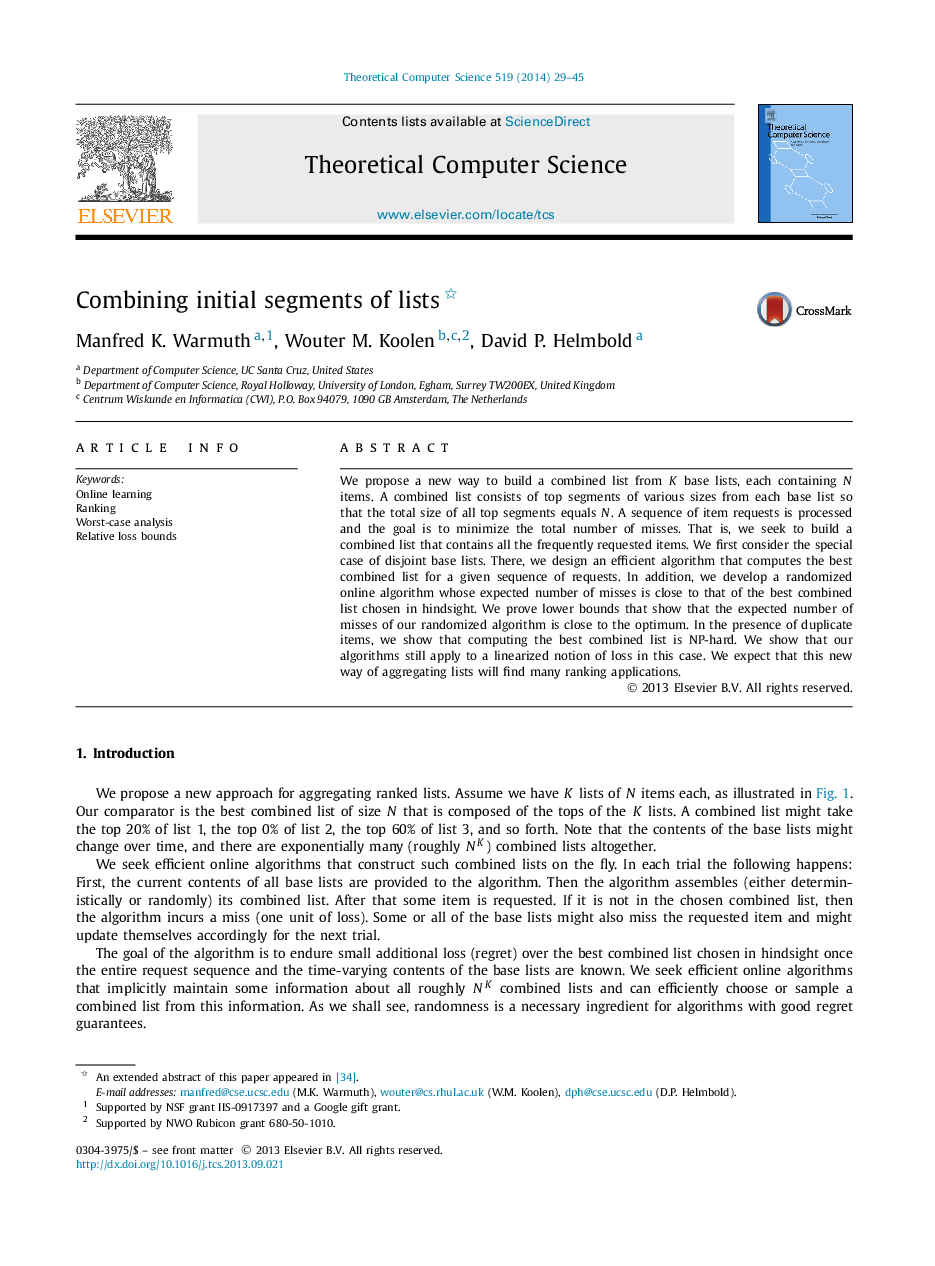| Article ID | Journal | Published Year | Pages | File Type |
|---|---|---|---|---|
| 438400 | Theoretical Computer Science | 2014 | 17 Pages |
We propose a new way to build a combined list from K base lists, each containing N items. A combined list consists of top segments of various sizes from each base list so that the total size of all top segments equals N. A sequence of item requests is processed and the goal is to minimize the total number of misses. That is, we seek to build a combined list that contains all the frequently requested items. We first consider the special case of disjoint base lists. There, we design an efficient algorithm that computes the best combined list for a given sequence of requests. In addition, we develop a randomized online algorithm whose expected number of misses is close to that of the best combined list chosen in hindsight. We prove lower bounds that show that the expected number of misses of our randomized algorithm is close to the optimum. In the presence of duplicate items, we show that computing the best combined list is NP-hard. We show that our algorithms still apply to a linearized notion of loss in this case. We expect that this new way of aggregating lists will find many ranking applications.
